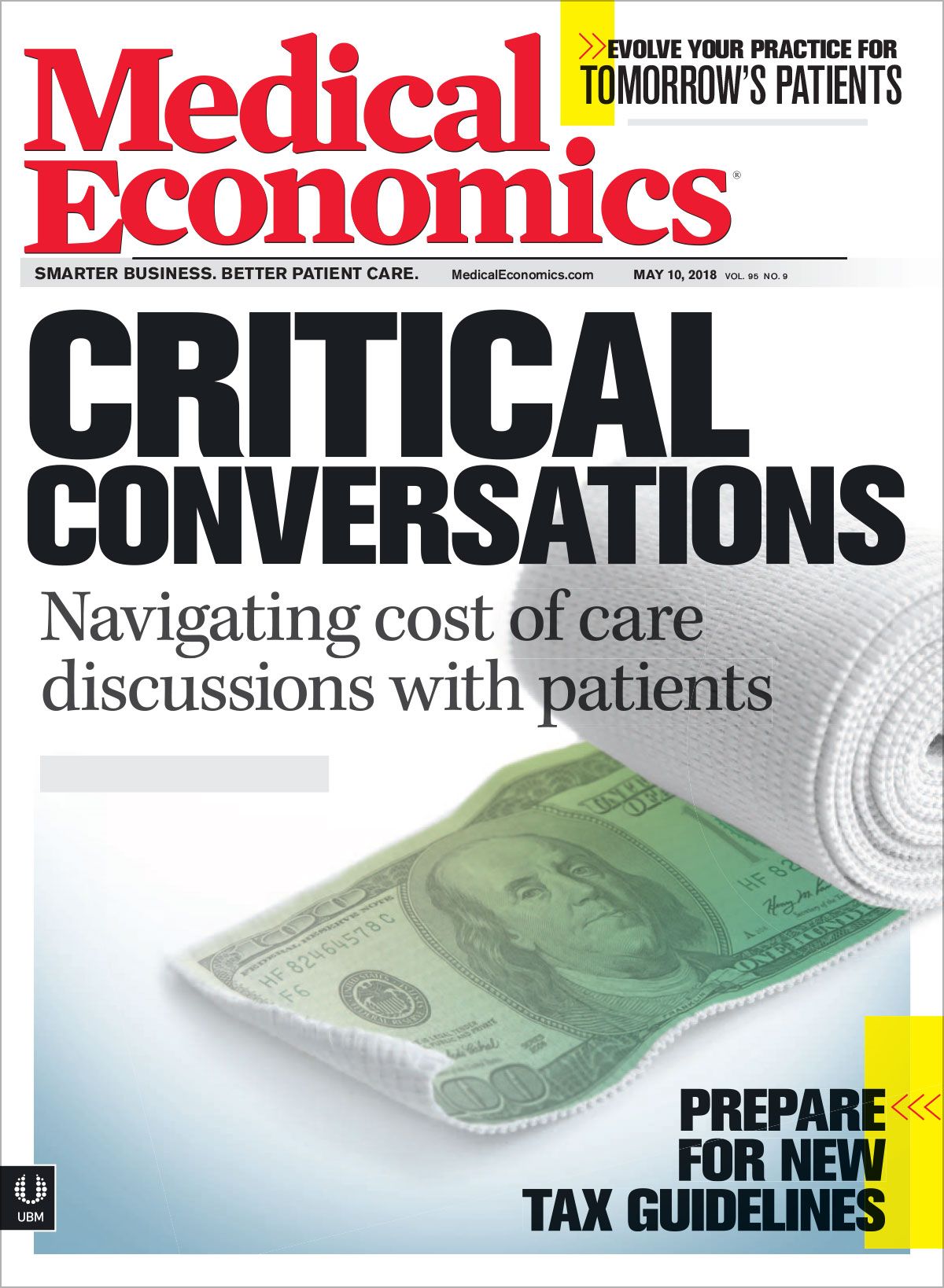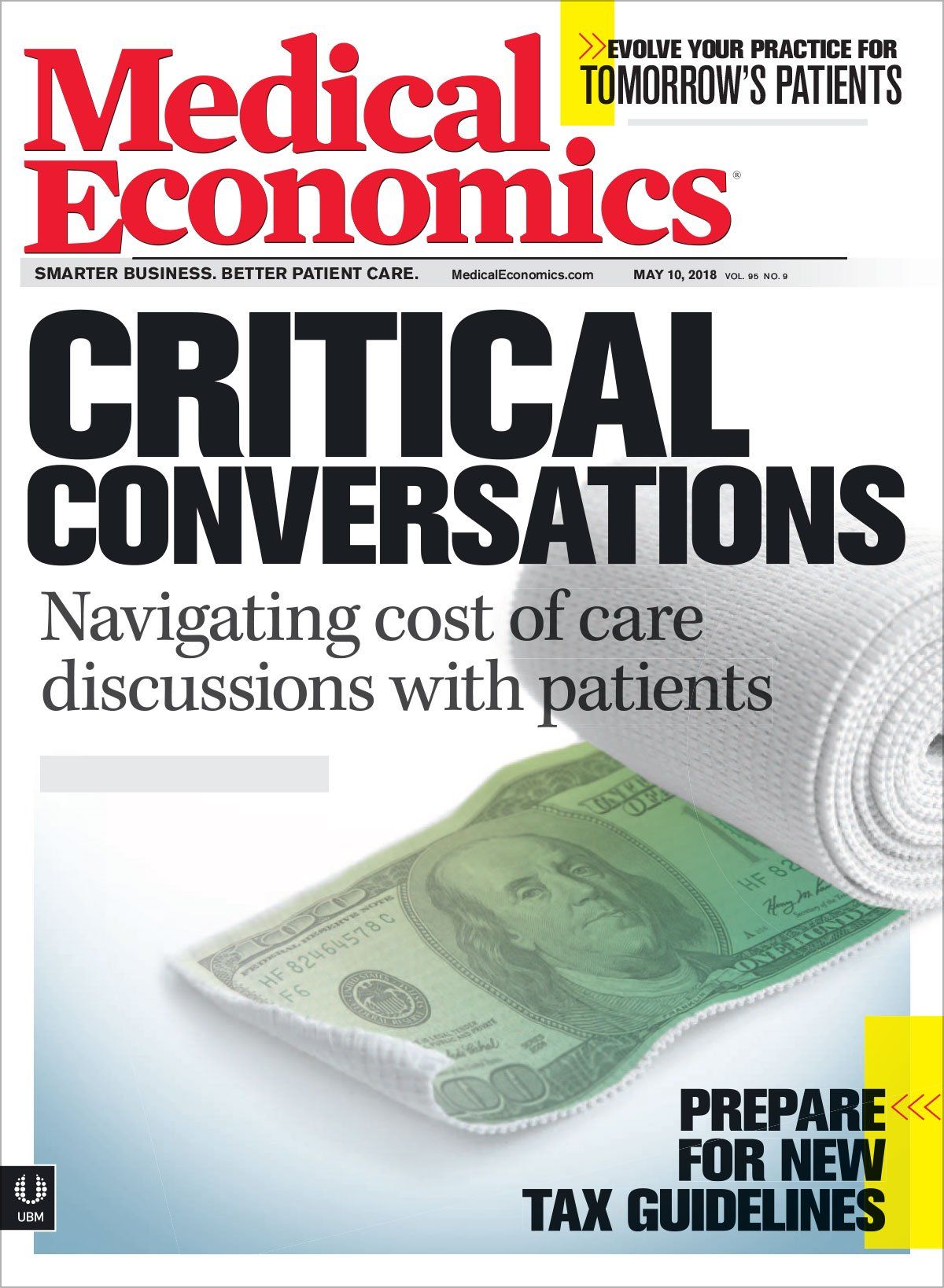Publication
Article
Medical Economics Journal
Health IT: Technology innovations for your practice
Author(s):
This year’s Healthcare Information and Management Systems Society (HIMSS) Annual Conference tackled major issues in medicine. Our editorial team was on-site in Las Vegas for this year’s gathering and compiled the following highlights:
This article appears in the 5/10/18 issue of Medical Economics

8 ways to reduce EHR frustration
Time spent on EHR data entry instead of interacting with patients is a common complaint from doctors
Martin Pricco, MD, MBA, an internist and president of Gould Medical Group in Modesto, Calif., did an evaluation with Paul DeChant, MD, MBA, deputy chief health officer of Simpler/IBM Watson Health, examining how Gould’s 360 physicians and allied health practitioners were spending their time in the EHR. The goal was to help the physicians become more efficient and reduce their frustration with the system. Their recommendations included:
- Improve the password process. Physicians should not spend any time typing passwords into workstations in the practice. Instead, provide a proximity password device or other technology solution that does not require the physician to enter a password on a keyboard each time they enter a new room.
- Create a review process. Physicians often waste too much time reviewing or approving items that could have been handled by someone else with a lower licensure level. Create a system where all “in basket” items are reviewed by a member of the staff before they are sent to a physician. Items that don’t require physician input can be rerouted to the appropriate person.
- Install a printer in each exam room. If physicians are spending time walking back and forth to get printouts from the EHR, consider installing a printer in each exam room. The cost of a printer is far less than the doctor’s time.
[To read the rest of their advice, visit bit.ly/EHR-frustration.]
Artificial intelligence is getting real
Artificial intelligence (AI) and machine learning were hot topics at HIMSS. Software companies are now harnessing computing power to analyze usage patterns within an EHR, comparing that to occurrences of medical errors or a physician leaving the company, and developing a set of triggers that can warn when a physician is showing signs of burnout so an intervention or additional training can be provided.
The same is true of diagnostic tools, where AI is being used to identify patterns to help doctors find the right diagnosis and sort through meaningless data to find the information they need.
Every AI expert emphasized that the software cannot replace a real doctor, and that these are just powerful tools at a physician’s disposal to improve care and save time.
Patients: The forgotten piece of the healthcare puzzle
Another common theme from this year’s conference was empowering the patient and giving them a seat at the healthcare table. Companies are providing solutions that give patients more access to their health data and more ways to communicate with their providers.
Kristina Sheridan, a patient advocate, emphasized that patients should be an equal member of their own care team and that technology developers needed to remember that these are people behind the data points.
Lose the wait
With physicians and hospitals looking to reduce no-shows and increase revenue, several companies have developed technologies that allow patients to virtually check-in for care and move appointments as necessary, reducing the amount of time spent in waiting rooms. For one chain of urgent care centers, wait times were reduced from three hours to 30 minutes and the reduction in no-shows paid for the system.
As patients take control of more of their healthcare, they also expect a better patient experience, and reducing wait times is a way to improve patient satisfaction scores.
Chatbots and value-based care
After a year of running his own practice, it became clear to Brett Swenson, MD, a primary care physician, that a traditional outpatient setting wasn’t for him.
He was seeing 25 patients per day, each for 15 minutes, and half of his time was dedicated to documenting, said Swenson. “
I wasn’t getting to know patients like [I wanted to]…my practice continued to grow and it was successful based on the definition of a traditional primary-care practice, but it had become factory medicine,” he said.
Once he left behind factory medicine for a concierge practice, he needed to adopt tech solutions that would help him adjust to a patient-focused practice, especially when it came to communication.
Chatbot is a computer program that simulates conversation with human users, primarily utilizing the internet, he said. The goal of chatbots was to meet patient needs for responsiveness, communication, and better outcomes.
Swenson’s concierge practice, Swenson Premier Care in Scottsdale, Ariz., rolled out the chatbot technology in three phases. The first phase was patient-initiated communication, in which they used the technology to schedule appointments and get medication refills. Instead of calling the clinic, patients could securely text through the chatbot system and make those arrangements.
Phase two involved the clinic initiating communication with the patient. The clinic focused on patients receiving preventive care, such as a flu vaccine. In this phase, the tech was still not integrated into the EHR and the process of finding patients eligible for the vaccine had to be done manually.
The final phase, which started in February, aims to solve that problem, as Swenson’s practice recently rolled out the chatbot with EHR integration. That means every appointment made through the technology now goes directly into the EHR’s practice management suite.
[To read the rest of their advice, visit bit.ly/chatbots-VBC.]
Falling behind
New research is outstripping a physician’s ability to keep up with the latest medical knowledge. Kurt Hegmann, director of the Rocky Mountain Center for Occupational and Environment Health, University of Utah, said that physicians would have to read 46 controlled trial studies a day to keep pace with current research and medical best practices.
The proposed answer is clinical support tools that can illustrate the most common treatments for a given diagnosis, thereby bringing more consistency to medical treatment while still giving doctors the ability to vary the treatment,
if required.
Information from our partner publication, Physicians Pratice, was also used in this article.






